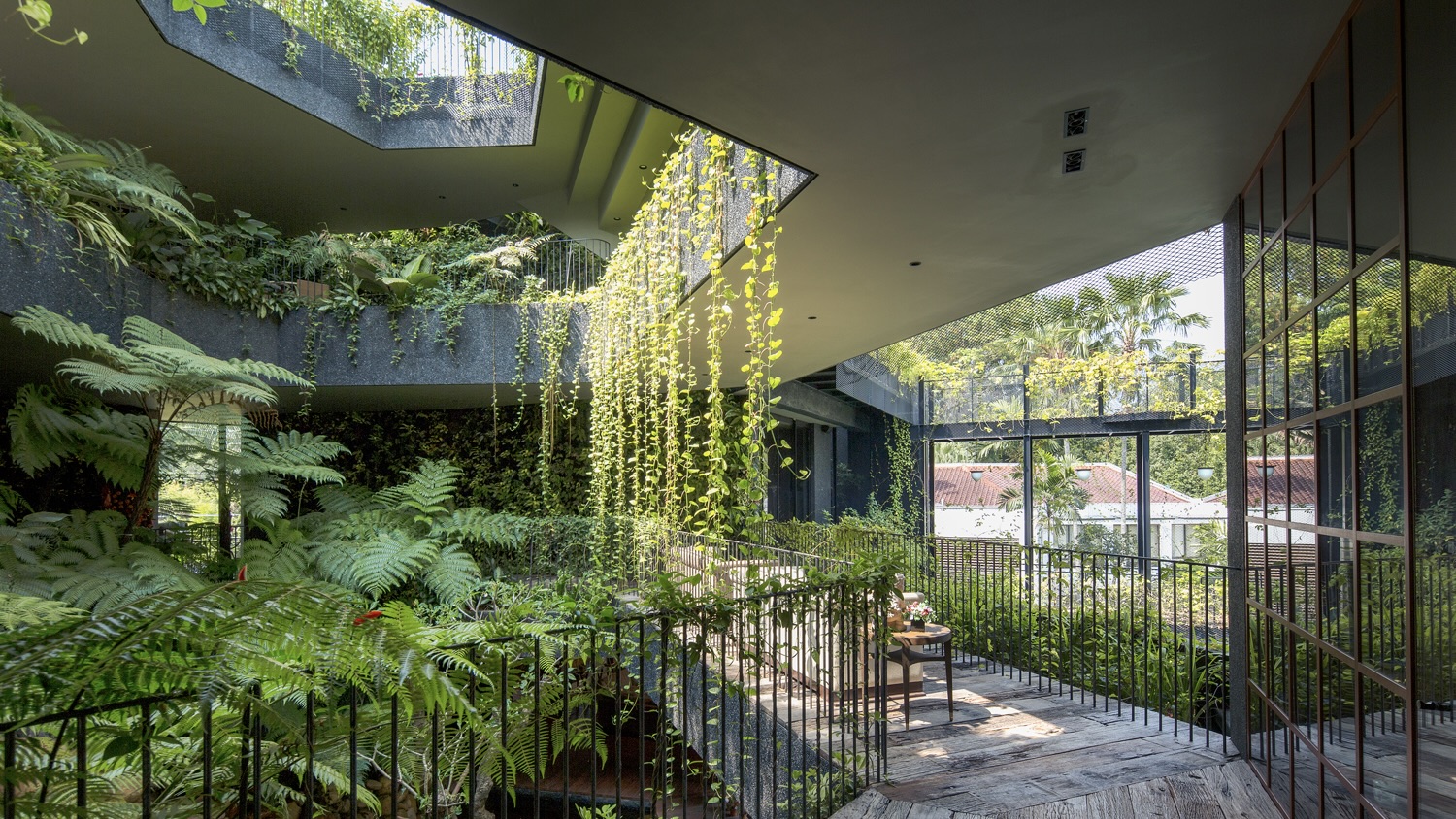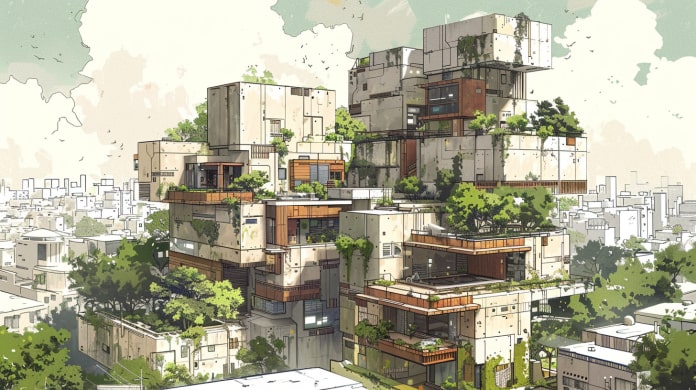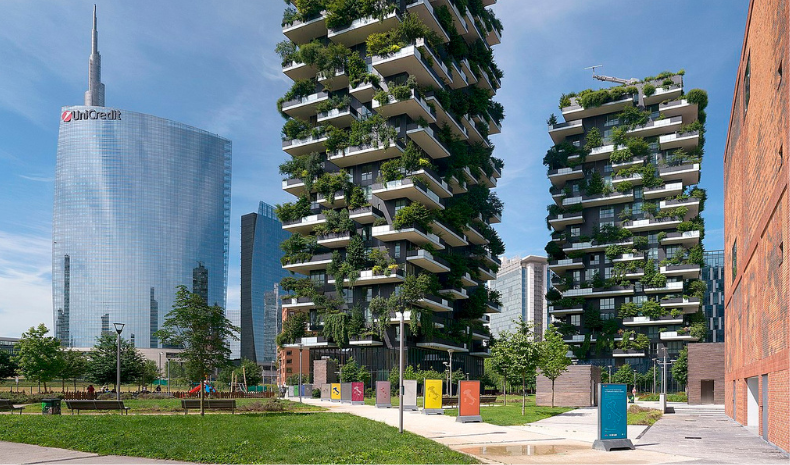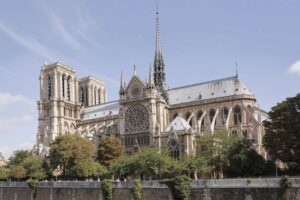Introduction: The Rise of Eco‑Brutalism
Eco‑Brutalism reinterprets mid-century Brutalism by introducing ecological softness into its bold, minimalist forms. While traditional Brutalism focused on function and raw materiality, its modern evolution integrates nature—transforming concrete jungles into breathable green habitats.

Origins: From Béton Brut to Living Structures
Coined from béton brut—“raw concrete”—Brutalism was popularized by architect Le Corbusier post-WWII. With its heavy use of concrete and minimalist detailing, it expressed structural clarity. Eco-Brutalism advances this by infusing nature directly into buildings—blending plant systems with exposed concrete to foster ecological awareness.

Defining Characteristics of Eco‑Brutalism
Juxtaposition of Concrete and Green
Living walls, vertical gardens, and rooftop forests are key. Structures like Milan’s Bosco Verticale transform urban towers into vertical ecosystems, where plants serve as both ornament and ecological infrastructure.

Recycled & Low-Carbon Materials
Eco‑Brutalist architecture makes use of fly ash concrete, reclaimed steel, and timber, reducing embodied carbon. This not only makes structures greener but also connects them to local histories through reused materials.

Passive Energy Systems
Natural ventilation, thermal massing, solar panels, and green roofs are essential. Concrete’s ability to stabilize temperatures pairs well with natural light optimization, minimizing energy needs.

Benefits: Beyond Aesthetics
Human Wellness & Biophilia
Research shows biophilic environments reduce stress and boost productivity. Olivia Broome, an Eco‑Brutalist designer, notes how “gravity-defying shrubs” soften imposing structures and evoke comfort in urban settings.
Climate Mitigation
Green façades lower surface temperatures, while passive cooling reduces AC usage. This dual system contributes to reducing urban heat islands and overall energy demands.
Biodiversity in Urban Areas
Using native, drought-tolerant species—like Virginia creeper or sedge grasses—supports pollinators and biodiversity, reviving life in dense concrete landscapes.
Challenges & Critical Perspectives
Concrete’s Carbon Legacy
Even with low-carbon variants, cement remains a major CO₂ emitter. Advancements like bio-concrete and carbon-capturing additives are critical to Eco‑Brutalism’s credibility.
High Maintenance Demands
Living walls and rooftop ecosystems require regular irrigation, trimming, and nutrient control—making operational sustainability a key design priority.
Superficial Greenwashing?
Critics warn of “eco façades” where greenery is used decoratively rather than functionally. True Eco‑Brutalism must integrate sustainability throughout—structurally, operationally, and aesthetically.
Global Icons of Eco‑Brutalism
Bosco Verticale, Milan:
Two towers covered in lush vegetation that promote biodiversity and reduce pollution.

PARKROYAL in Pickering:
Singapore, features tiered green roofs and expanded planters blended into concrete forms.

One Central Park:
Sydney, features living walls and cantilevered sky gardens atop concrete towers.

Cornwall Gardens:
Singapore features trees that curve across concrete courtyards, blurring indoor-outdoor barriers.

Designing an Eco‑Brutalist Project
Ecosystem Concept – Allow design decisions to be guided by the local climate, native vegetation, and site history—naturally introduce biodiversity.
Material Integrity: Choose recycled or reclaimed concrete, low-carbon blends, and salvaged lumber or steel.
Passive Envelope: Utilise thermal mass, natural shading, movable windows, and orientation-based lighting methods.
Design Integrated Green Systems that include irrigation, vegetation support, and maintenance.
Lifecycle Planning: Select materials and systems with low environmental impact and long-term adaptability.
The Future of Built Environments
Eco-Brutalism addresses serious climate and urbanisation concerns. Its combination of brutalist form and green intent results in long-lasting, adaptive, and contextually responsive architecture. Technological advancements such as bio-aggregates, self-healing concrete and flora-robotic integration have the potential to transform eco-brutalist buildings into fully living structures.
Conclusion: Harmony of Force and Flourish
Eco-Brutalism demonstrates that what once seemed frigid and oppressive may become warm, living, and sustainable. It’s more than just aesthetics; it’s a philosophy that values material authenticity, environmental responsibility, and nature’s healing significance. It reshapes urban form and human experience by fusing bold concrete with bright vegetation, promoting architecture that is as durable as concrete and as ever-changing as nature.
For more information like this visit our website:
for more information you can visit:





